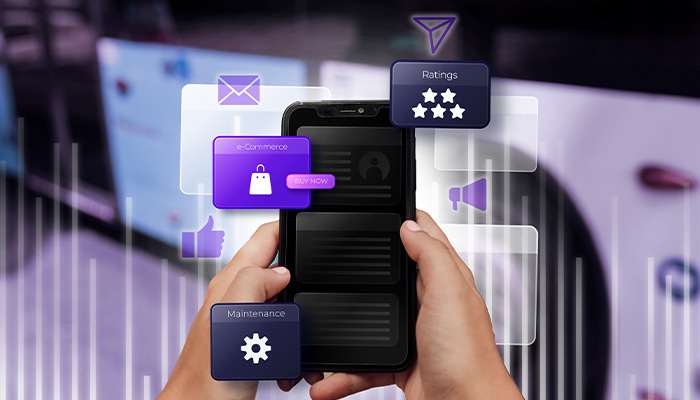Chatbot UX Design Guidelines
Top Guidelines and Best Practices for Chatbot UX Design
Sep 18, 2023 15:30 PM
Chatbot UX Design Guidelines
Sep 18, 2023 15:30 PM

Chatbots are tools that facilitate conversation on websites. They should be part of your support team. These tools can be used in many ways, including helping customers make purchases or search for information. You can design a good bot if you use chatbot best practices.
Chatbots can help you reach more customers if they are designed correctly. Most customers prefer to reach out to businesses via chatbots and live chat. You must be thinking about designing one, but you need a plan.
We will cover 12 best practices for building a chatbot. You can start implementing chatbot best practices by reading on.
Following best practices will help businesses achieve this goal. These tips will help you build a chatbot that suits your business. Chatbots are only helpful to businesses when they engage with customers.
Chatbots' best practices range from the design of the chatbot's scope to its aesthetics. These best practices will help you shape your chatbot to meet your customers' needs. You could incorporate quick responses if your customers are fed up with long wait times.
Quick responses allow operators to respond quickly to customers waiting in line. They also reduce the time it takes to answer routine questions. This can increase customer satisfaction. Customers want immediate answers to their queries.
Imagine you're building a chatbot, whether rule-based, AI-based, or from scratch. You want to show off the tone of voice for your brand. These are the best practices to follow. This roadmap will help you quickly create an engaging conversation for your customers.
Knowing what makes a good chatbot different from a bad one is crucial before you begin building your own. The best chatbots include:
They are goal-oriented and guide users to their desired destination with minimum effort.
Context-aware: They take into consideration the situation of the user.
Clear and concise: They use straightforward language to get straight to the point.
They allow users to take turns in the conversation and don't send out too many responses at once.
Politeness: They respect the time and goals of users. When a customer initiates a conversation with them to resolve their issue, they do not push discounts and offers on them.
Error-tolerant: They anticipate errors and recover seamlessly.
Each type of chatbot has its own benefits. It is best to start with rule-based bots. You can add artificial intelligence later, if needed. Let's compare the two.
Chatbots that are based on rules respond to commands. They follow a conversational flow that is guided by a decision tree. Chatbots usually offer buttons to make it easier for users to respond. Some chatbots can also answer questions using keywords.
Rules can be simple or complex. The most common rule-based chatbots use document retrieval to guide users with further questions until they reach the right solution.
This type of chatbot is best used for common questions with predictable patterns. This type of chatbot is also called a decision tree chatbot. The branches represent the choices that the user can make.
AI chatbots can be used in a wide range of unpredictable situations. They learn through the interactions they have with end users. Natural language processing (NLP) is critical to making this possible.
NLP allows chatbots to respond intelligently by understanding the user's intent and context. It's crucial to test and improve AI technology regularly. Find out more about conversational AI.
Usually, we don't require conversational AI for our chatbots to work. Chatbots' best practices include automating as little as possible.
You need to choose the best home for your bot. You'll want your chatbot to be on a channel where customers are already active, like Facebook Messenger or WhatsApp.
People don't like to be forced into downloading yet another app to communicate with brands. People will be more likely to interact with your brand if you use the messaging apps they already love and know.
ParLaw's law is usually applicable regarding best practices for chatbots. ParLaw's Law states that 80% of effects are caused by 20% of causes. Chatbots can help you achieve this. 80% of the customer support tickets will likely come from 20% of the FAQs. FAQ chatbots are one of the most influential and popular types.
Understand your audience, then categorize 20% of the inquiries that generate the most support tickets. The rest of the FAQs are usually more complex or challenging support tickets.
The rest of the FAQs are usually more complex or challenging support tickets. It is essential to create a smooth handover process with a computer agent. You should ensure that your customers can always reach someone when they need to or know when one will be available.
As you collect more data, your chatbot's abilities will improve. Consider automating low-value tasks so your agents can focus on more valuable, rewarding conversations.
A successful chatbot requires a user flow map. Start small. This is one of the best chatbot practices. We recommend starting with a rule-based chatbot and adding AI and NLP later.
You must create a decision tree with all the FAQs (or use cases) you wish to automate. This will be a guide for the conversation.
Quick replies are one of the best practices when developing chatbots. This allows you to handle multiple chats simultaneously. When you receive a common request, you can send a customer a message you have already written.
They were more flexible at the start of the chat. Quick replies are predefined responses that your chatbots will offer to customers. It is important to use fewer words, as this will keep your customers interested.
This feature is available on many messaging platforms, such as WhatsApp. You can simplify business communication by using quick replies on WhatsApp. We will now discuss other channels that your chatbot can integrate to provide customer satisfaction.
Messaging is much more common on social media and messaging platforms than on websites. You can connect with customers through any channel. Sending updates to leads via WhatsApp or Facebook Messenger is a great way to engage them.
Replace text with buttons and graphics wherever you can. Images are processed faster by the brain than words. Use buttons, quick responses, carousel selections, and list options to improve conversation flow.
It is much easier to choose a date from a calendar than to type it into a message. If there are only two options in a branch of a decision, it is easier to use two buttons than written words.
Chatbots today are distinguished by these UI improvements. Good chatbots will save time by using buttons, letting someone upload a voice note when appropriate, or allowing them to sign with their finger.
If you're torn between typing "yes" or pressing the "yes button," the latter option makes more sense. Use buttons to improve the usability of your chatbot.
The bot should allow users to interact with it easily. Navigation and flow can be enabled by using buttons and quick responses. This will improve the overall user experience of your bot and reduce fallback rates.
Here are the best practices for deploying buttons in your bot:
Do not provide too many choices: If you're interested in sales bots, multiple offers will generate 266% fewer leads than a single offer.
Keep quick responses simple: By keeping it simple, users are less likely to lose interest in reading or writing too much.
Create relevant context-based buttons: Users shouldn't be faced with a situation where they cannot understand what a button does.
A successful chatbot must have a personality. Chatbots' best practices suggest that giving your bot a voice will make it more engaging. Concentrate on your audience. How can you build a chatbot to relate to your customers' needs?
It is essential to give your chatbot a personality and tone. Please don't overdo it. A chatbot that is "too friendly" can be annoying. Your chatbot should reflect the voice and tone of your brand.
PerfectionGeeks can help you increase the likelihood of a successful deployment. PerfectionGeeks can identify your pain points in your digital transformation journey by assessing the specific conditions of your business. They can also provide specific advice based on their observations of your business, experience, and theoretical background.
Read our best practices for digital transformation to get generic suggestions on how to transform your business.

Chatbots have become the most effective way to increase conversions, improve customer service, and generate leads.
To provide better customer service, it is essential to choose the right chatbot. After selecting the right chatbot, you must determine your target audience to customize its voice. Add some customization features after that to make it look visually pleasing.
Chatbot UI is a discipline that focuses on improving the customer experience. We've discussed some best practices for chatbots that can assist you in designing the conversational interface and design. This helps you create an excellent experience for your customers.
If you want to stay with live chat, you can use our PerfectionGeeks Chat solution. This is the perfect solution for brands that want in-depth analysis and an easy-to-use interface. Try it for 15 days for free!
Chatbot UX design should prioritize user needs and preferences, ensuring a conversational and intuitive experience.
Provide clear and concise responses to user queries.
Maintain a consistent and on-brand tone throughout interactions.
Minimize cognitive load by using natural language and avoiding jargon.
Use a friendly and relatable persona for your chatbot.
Implement interactive elements like buttons, carousels, and quick replies for easy navigation.
Offer personalized recommendations based on user behavior and preferences.
Continuously optimize the chatbot's responses through user feedback and analytics.
You overload users with too much information or options in a single message.
They are failing to handle user errors and misunderstandings gracefully.
You are neglecting to provide a clear exit strategy for users who want to speak to a human agent.
You are ignoring accessibility considerations, such as support for screen readers and keyboard navigation.
Implement a clear and easily accessible "human handoff" option within the chat interface.
Train your chatbot to recognize when it's out of depth and suggest contacting a human agent.
Ensure smooth conversation history and context transfer to the human agent to avoid repetition.
Monitor chatbot-human agent transitions and gather feedback to improve the handoff process over time.
These FAQs provide insights into the essential principles, engagement strategies, pitfalls to avoid, and human-agent transition considerations in chatbot UX design.
Strategy
Design
Blockchain Solution
Development
Launching
Testing
Maintenance
Contact US!

Plot 378-379, Udyog Vihar Phase 4 Rd, near nokia building, Electronic City, Phase IV, Sector 19, Gurugram, Haryana 122015
Copyright © 2025 PerfectionGeeks Technologies | All Rights Reserved | Policy
Contact US!

Plot 378-379, Udyog Vihar Phase 4 Rd, near nokia building, Electronic City, Phase IV, Sector 19, Gurugram, Haryana 122015
Copyright © 2025 PerfectionGeeks Technologies | All Rights Reserved | Policy